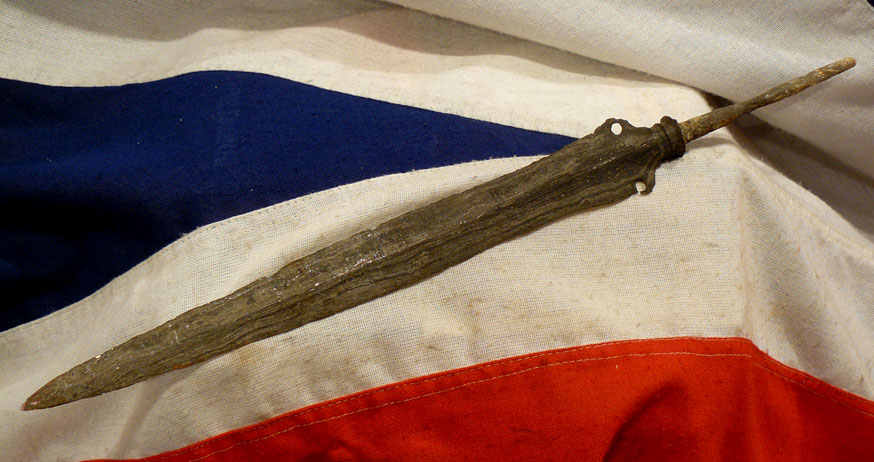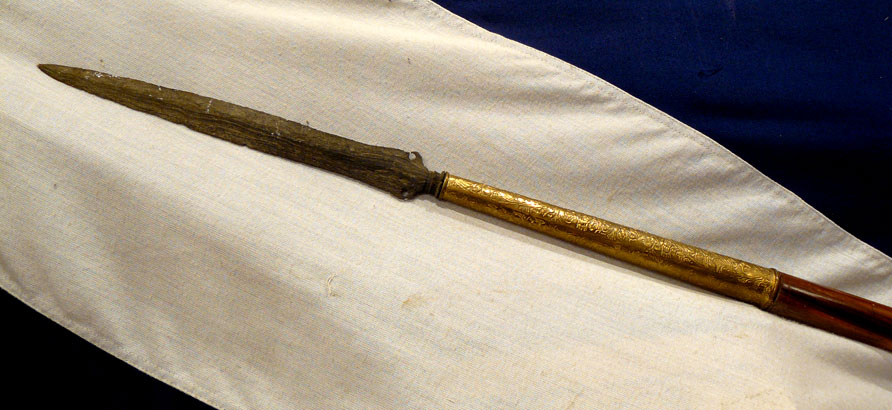An Indonesian Spear With Meoteorite Steel Pamor Blade. A Polearm Version of the Famed Indonesian Kris or Keris
Pamor is the pattern of white lines appearing on the steel blade face. Kris blades are forged by a technique known as pattern welding, one in which layers of different metals are pounded and fused together while red hot, folded or twisted, adding more different metals, pounded more and folded more until the desired number of layers are obtained. The rough blade is then shaped, filed and sometimes polished smooth before finally acid etched to bring out the contrasting colours of the low and high carbon metals. The traditional Indonesian weapon allegedly endowed with religious and mystical powers. With probably a traditional Meteorite laminated iron blade with hammered nickel for the contrasting pattern. Meteoritic blade form in traditional straight bladed Kris.The keris is considered a magical weapon, filled with great spiritual power. In Javanese there is a term "Tosan Aji" or "Magic Metal" used to describe the keris. The keris is replete with the totems of Malay-Indonesian culture of hindu and islam. The blade is a mixture of meteoric steel and nickel According to traditional Javanese kejawen, kris contain all the intrinsic elements of nature: tirta (water), bayu (wind), agni (fire), bantolo (earth, but also interpreted as metal or wood which both come from the earth), and aku (lit: "I" or "me", meaning that the kris has a spirit or soul). All these elements are present during the forging of kris. Earth is metal forged by fire being blown by pumped wind, and water to cool down the metal. In Bali, the kris is associated with the naga or dragon, which also symbolizes irrigation canals, rivers, springs, wells, spouts, waterfalls and rainbows; thus, the wavy blade symbolizes the movement of the serpent. Some kris have a naga or serpent head carved near the base with the body and tail following the curves of the blade to the tip. A wavy kris is thus a naga in motion, aggressive and alive; a straight blade is one at rest, its power dormant but ready to come into action.
In former times, kris blades were said to be infused with poison during their forging, ensuring that any injury was fatal. The process of doing so was kept secret among smiths. Different types of whetstones, acidic juice of citrus fruits and poisonous arsenic bring out the contrast between the dark black iron and the light coloured silvery nickel layers which together form pamor, damascene patterns on the blade. The distinctive pamor patterns have specific meanings and names which indicate the special magical properties they are believed to impart.
Hardwood long haft [with considerable age bend]. Embossed brass decorative haft mount. If exported the wooden haft would have to be 'halved' for transport
Code: 17594



